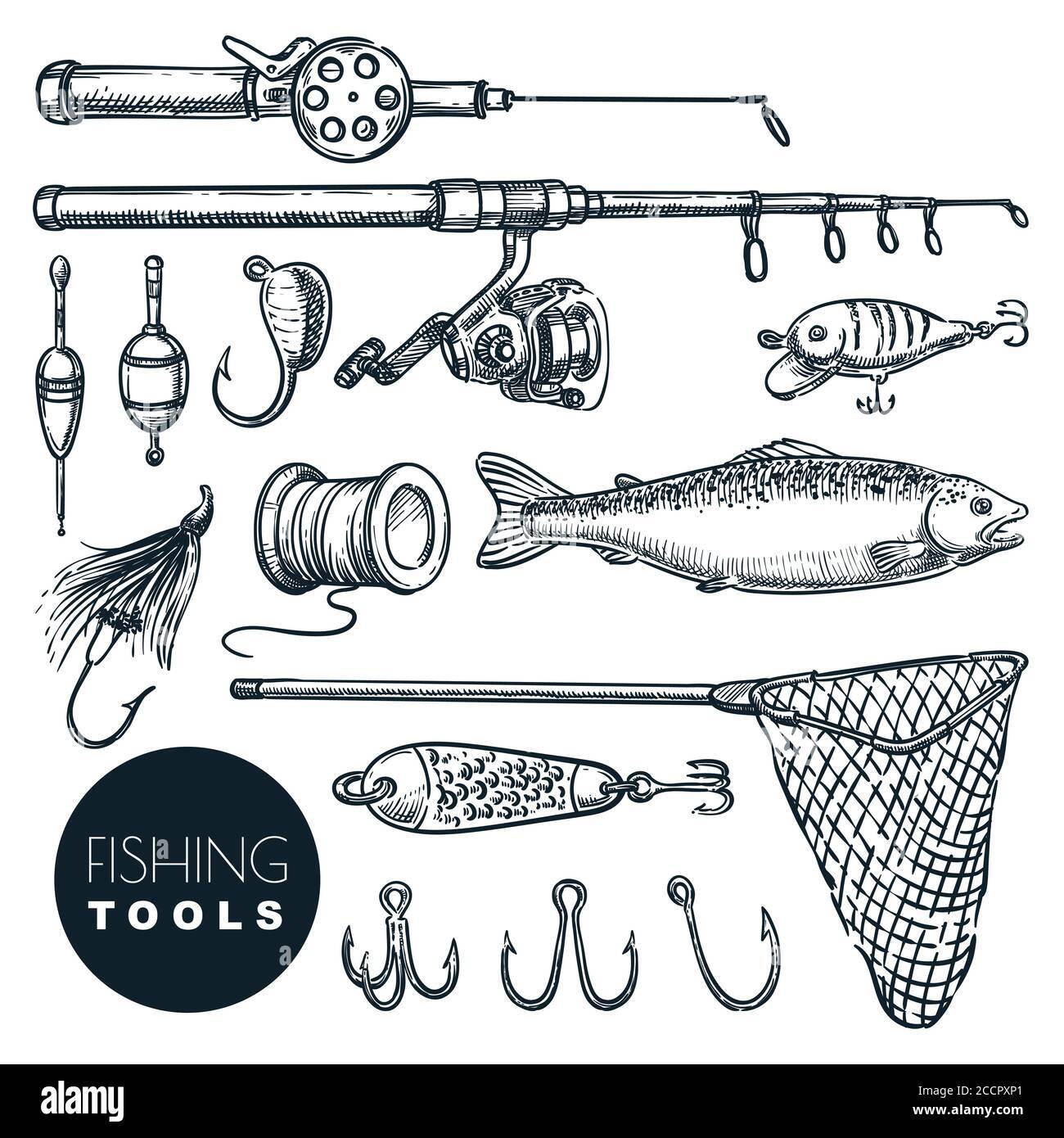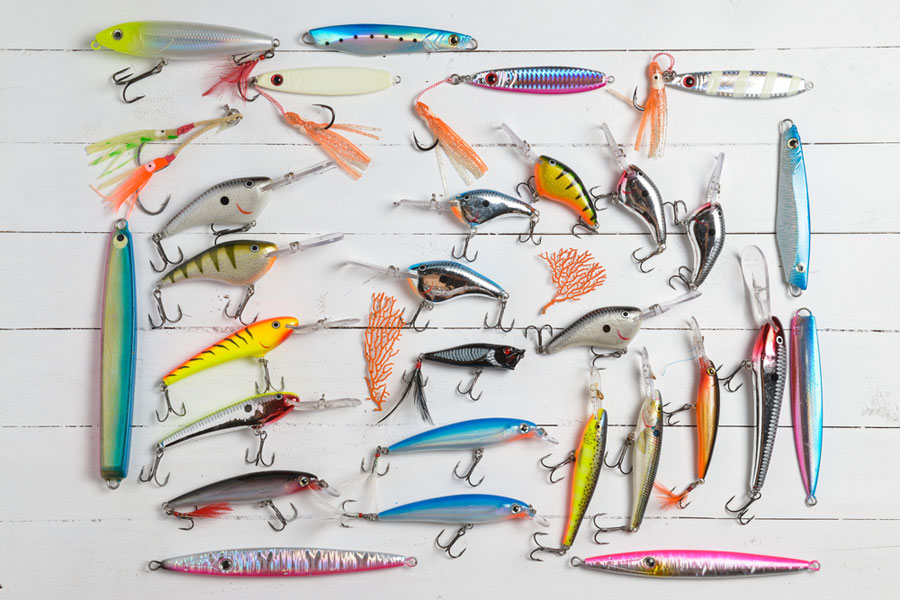The Complete Guide to Fishing Fishing: Lures, Tackle, and Fly Fishing Basics for All Ability Degrees
The Total Overview to Fishing Fishing provides a comprehensive consider essential equipment for anglers at any level. It covers different baits, tackle components, and fly fishing essentials. Recognizing these elements is essential for a successful fishing experience. The guide also emphasizes the value of seasonal techniques and proper equipment upkeep. As fishermens browse their options, they might question which specific items will really improve their angling adventures.
Understanding Various Sorts Of Fishing Lures
A range of fishing baits exist, each made to bring in details types of fish. Natural baits, such as insects, worms, and minnows, simulate the fish's all-natural diet plan, making them effective for many types. For example, nightcrawlers are preferred for fresh water angling, while minnows attract larger fish like bass and pike.
Man-made lures, consisting of jigs and lures, are crafted to imitate the activity and appearance of victim. These can range from brilliantly tinted plastic worms to practical crankbaits created to resemble swimming fish.
One more classification is scent-based baits, which utilize odors to attract fish from a range. These baits are especially useful in murky waters.
Inevitably, the selection of bait relies on the target varieties, water problems, and angling technique, making it essential for anglers to understand their options and choose the finest lure for their specific angling scenario.
Crucial Fishing Tackle: Poles, Reels, and Lines
While choosing the right angling tackle, understanding the interplay in between rods, reels, and lines is essential for effective fishing. Fishing rods can be found in numerous sizes and actions, each designed for specific angling methods and types. A shorter pole provides much better control for close-in fishing, while longer poles permit better casting distance.
Reels, offered in rotating, baitcasting, and fly options, must match the pole and line type to guarantee smooth procedure. The option of reel substantially influences the fishermen's ability to fetch catches effectively.
Lines, categorized by material and strength, act as the connection in between the fish and the rod. Monofilament, fluorocarbon, and knotted lines each offer unique benefits, affecting presence and sensitivity. Choosing the suitable combination of pole, line, and reel is essential, as it directly affects spreading performance, level of sensitivity to bites, and general angling success. Each component has to function sympathetically to enhance the angling experience.
Picking the Right Fishing Lures for Your Target Species
Choosing the appropriate angling tempts calls for an eager understanding of the choices of target varieties - Xplorer Fly Fishing. Aspects such as water problems and local forage play a significant function in determining which tempts will certainly be most effective. By aligning appeal selection with these variables, anglers can enhance their chances of success on the water
Recognizing Variety Preferences
Selecting the right fishing lures requires an understanding of the certain preferences of target species, as various fish are drawn in to differing activities, colors, and sizes. Bass are commonly drawn to bright, showy attractions that mimic their natural victim, while trout might favor much more refined, natural shades. Furthermore, the size of the appeal must match the size of the fish being targeted; bigger types commonly respond much better to bigger lures. Activity also plays an essential function; some fish are attracted to appeals that mimic unpredictable habits, while others choose a steady, smooth obtain. By recognizing these preferences, fishermens can efficiently raise their possibilities of a successful catch, customizing their tackle to the distinct features of each varieties.
Matching Lures to Problems
The efficiency of fishing lures commonly rests on the prevailing environmental problems. Fishermens should take into consideration variables such as water temperature level, clearness, and current when selecting the ideal lure. In dirty waters, intense or loud attractions have a tendency to bring in focus, while in clear conditions, more natural colors and refined activities are reliable. Seasonal modifications likewise play an essential role; throughout generating periods, fish might react better to lures simulating their prey. Additionally, time of day influences fish task; dawn and dusk are prime times for making use of topwater appeals. Inevitably, understanding these conditions enables fishermens to match their lures to the target species, improving their opportunities of a successful catch. Understanding of environmental characteristics is crucial to effective lure option.
The Fundamentals of Fly Fishing Gear
A strong understanding of fly fishing equipment is essential for both beginners and experienced anglers alike. The fundamental parts of fly angling gear consist of the fly rod, reel, line, and flies. The fishing pole, typically longer and much more flexible than traditional fishing rods, permits for specific spreading. Selecting the right rod relies on the fishing environment and target varieties.
The reel, made to hold the fly line, plays a considerable function in taking care of line access and drag. Fly lines are specialized for various techniques, from drifting to sinking, and should be matched to the rod's specifications.
Last but not least, flies mimic water insects and bait fish, and can be found in different designs such as completely dry flies, fairies, and banners. Picking the suitable fly is crucial, as it has to correspond to the regional fish varieties and problems. Mastery of these basic parts develops the structure for successful fly fishing experiences.
Tips for Organizing Your Fishing Tackle Box
Organizing an angling take on box can substantially enhance a fishermen's effectiveness on the water. By sorting take on by kind, using containers successfully, and identifying every little thing clearly, fishermen can rapidly access their equipment. These techniques not just save time yet additionally assure that important discover this products are constantly at hand when required.
,aspect=fit)
Type by Type
Sorting deal with by kind assurances that anglers can swiftly situate the gear they need when the ideal fishing chance occurs. Organizing things such as hooks, appeals, and sinkers right into designated areas improves efficiency and decreases irritation throughout getaways. Categorizing baits by kind-- live, fabricated, or iced up-- enables for swift choices based on fishing problems. Tackle boxes can be split into compartments for simple accessibility to details equipment, such as fly angling basics or deep sea equipment. This method not only saves time however additionally aids in keeping the condition of the tackle, ensuring whatever continues to be in ideal shape. By applying this organized strategy, fishermens can concentrate extra on the angling experience instead than looking for lost products.

Usage Containers Carefully
Using containers effectively can considerably enhance the company of an angling deal with find out this here box. Fishermens need to contemplate making use of a selection of containers, such as little deal with trays, zip-lock bags, and compartmentalized boxes, to divide various sorts of gear. When searching for particular products but also avoids tangling and damages, this method not only conserves time. For example, hooks, weights, and attractions can each have assigned containers, facilitating very easy accessibility during fishing expedition. Furthermore, transparent containers enable quick exposure of materials, streamlining the option procedure. It is additionally advantageous to contemplate the dimension and shape of containers to make best use of area within the deal with box. By implementing these organizational approaches, fishermens can maintain a more pleasurable and effective angling experience.
Tag Everything Clearly
Clear labeling is crucial for preserving an orderly fishing deal with box. By clearly noting containers and compartments, anglers can easily situate specific things, saving time and reducing irritation during fishing expedition. Utilizing water resistant tags warranties toughness in various climate problems. It is recommended to classify things such as hooks, attractions, and line types, offering fast gain access to when needed. Furthermore, color-coded tags can improve exposure and organization. Consistently upgrading labels as supplies alter helps maintain an efficient system. When angling with others, clear labeling is especially useful, permitting easy sharing and understanding of deal with plans. Inevitably, a well-organized deal with box with clear tags cultivates a more successful and pleasurable angling experience.
Seasonal Fishing Techniques and Equipment Adjustments
As the periods change, fishermens must adapt their techniques and equipment to maximize their chances of success. In spring, for example, fish become a lot more active as water temperature levels increase, motivating fishermens to use lighter tackle and lively baits to tempt bites. Throughout summer, the warmth presses fish to deeper waters, requiring larger equipment and methods such as trolling or deep-water jigging.
In autumn, as fish plan for winter season, fishermens ought to concentrate on areas with abundant food resources, using bigger baits to attract them. Wintertime angling usually calls for specialized gear, including ice angling equipment and warm apparel, as fish come to be inactive in cold water.
Furthermore, changes in line choice, attraction color, and lure type are necessary throughout the year (Xplorer Fly Fishing). By remaining in harmony with seasonal patterns and making these equipment changes, anglers can boost their effectiveness and appreciate a worthwhile fishing experience despite the moment of year
Maintenance and Treatment for Your Fishing Equipment
Appropriate maintenance and take care of fishing equipment are essential for assuring longevity and optimal performance. Fishermens should consistently evaluate their rods, reels, and lines for indications of wear, such as fraying or rust. Cleaning up equipment after each fishing trip is crucial; freshwater must be used to rinse off salt and debris, preventing rust and buildup.
Reels call for lubrication to maintain smooth procedure; applying the suitable oil to relocating components can improve their life expectancy. Pole overviews should be checked for chips or fractures, as they can impact spreading and line stability.
Saving gear in a completely dry, temperature-controlled environment helps avoid damage from humidity or extreme temperatures. In addition, changing old or damaged take on, such as hooks and appeals, assurances ideal efficiency during angling trips. By adhering to these upkeep methods, fishermens can greatly extend the life of their equipment and take pleasure in a much more successful angling experience.
Frequently Asked Concerns

What Are the Best Neighborhood Fishing Spots for Beginners?
The very best regional fishing spots for newbies commonly consist of calm lakes, quickly obtainable rivers, and assigned fishing fish ponds. Entertainment areas and local parks regularly supply safe atmospheres with abundant fish populaces, making them perfect for beginner anglers.
Exactly How Can I Recognize Fish Types in My Area?
To determine fish varieties in an area, one can observe physical qualities, seek advice from local area guides, utilize smartphone applications, or engage with local fishing areas for understandings and identification ideas specific to the region.
What Licenses Do I Required for Fishing?
To fish Website legitimately, one commonly needs an angling license, which varies by area. Additionally, some locations may call for details authorizations for certain species or angling methods, emphasizing the relevance of checking regional regulations prior to fishing.
Exactly How Do Climate Problems Impact Fishing Success?
Weather considerably influence angling success. Elements such as temperature level, wind, and rainfall influence fish behavior, feeding patterns, and environment. Fishermens often adapt their approaches based upon these problems to boost their possibilities of an effective catch.
What Prevail Fishing Decorum Regulations to Follow?
Typical angling decorum policies include respecting others' room, preventing noise, cleaning up after oneself, complying with local laws, and exercising catch and release when proper. These standards foster a harmonious environment for all anglers.
Fishing rods come in various sizes and activities, each designed for specific angling techniques and varieties. A solid understanding of fly fishing equipment is essential for both newbies and seasoned fishermens alike. Organizing a fishing take on box can considerably improve a fishermen's efficiency on the water. Sorting tackle by type guarantees that fishermens can rapidly find the gear they require when the best angling chance emerges. The finest regional angling areas for newbies typically consist of tranquil lakes, quickly available rivers, and marked angling fish ponds.